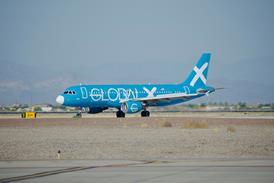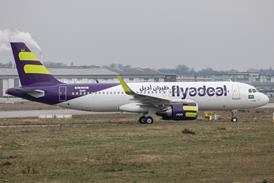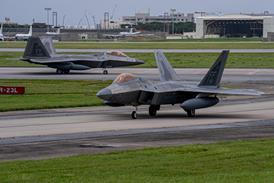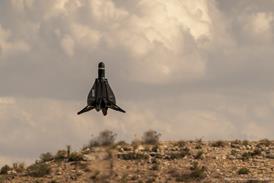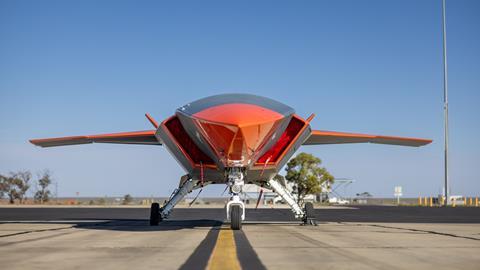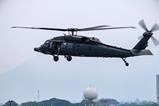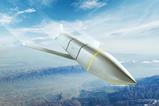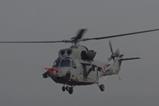The Boeing MQ-28 Ghost Bat is a crucial part of the airframer’s collaborative combat aircraft (CCA) strategy and stands to enhance Australia’s position in the global defence aerospace industry.
The developmental unmanned loyal wingman aircraft is a joint effort between Boeing and the Royal Australian Air Force (RAAF). Four years on from its first flight in February 2021, an improved Block 2 version is in the works, as Boeing Defence Australia invests in the industrial capacity that will be needed should the new jet gain a customer.
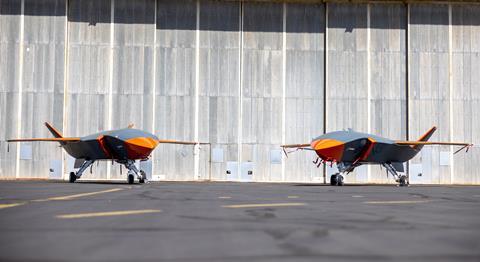
The MQ-28 created a stir in 2019 when a full-sized mock-up of what was then called the Airpower Teaming System was unveiled at the Avalon air show. Today, it is a maturing platform in a crowded field of aspiring CCAs. The MQ-28 is coming of age during a decade that will see the operational concept of the CCA clarified, with automated combat aircraft moving closer to working seamlessly with their manned counterparts.
Glen Ferguson is the director of Boeing’s global MQ-28 programme. Ferguson is well versed in air warfare: before joining Boeing, he spent 17 years in the RAAF, most of it as a navigator in the now-retired General Dynamics F-111 fighter-bomber.
In a call with reporters, Ferguson says the programme has proceeded well.
“Once we got through the teething issues of getting the aircraft flying and all the elements with that, we proved out the airframe, and we’re largely done with airframe testing,” he says.
Over the last 12-18 months the focus has been on testing mission systems, with an emphasis on electronic warfare (EW) and intelligence, surveillance and reconnaissance (ISR).
This entails integrating and operating payloads, and exploring the aircraft’s behaviour in a mission environment. Ferguson stresses, however, that the mission system – and not the MQ-28 platform as such – is the real priority.
“The mission system is probably more important than the airframe,” he says. “In many ways, the airframe becomes the vehicle within which we get the mission system to the fight.”
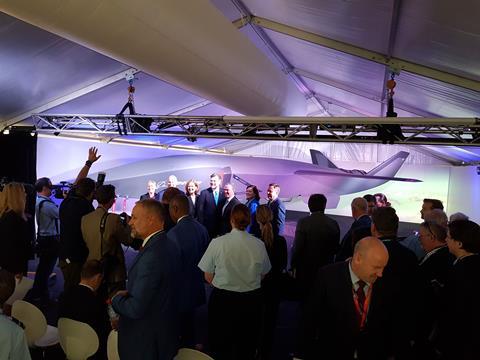
In other words, the know-how that applies to the MQ-28 can be applied to other CCAs. This includes the aircraft’s ability to generate contacts and then automatically fuze that information with input from other aircraft and sensors.
So far, the small MQ-28 test fleet has flown 100h, but has undergone over 20,000h of testing in a digital environment.
“Our mission system is maturing at a rate that I don’t think anyone really understands or has comprehended in the past, because we are now flying multiple aircraft at a time, including virtual hybrid-live aircraft,” says Ferguson.
“We’re running a virtual aircraft so that we can do sensor and data fusion to track operational targets at operationally relevant ranges to deliver the outcome to the air force.”
Operational tests have taken place at Australia’s Woomera test range approximately one out of every three months, with the aircraft flying one to three sorties daily, including some flights at night.
The RAAF is heavily involved in the programme. It is providing funds for ongoing development work and has personnel embedded across MQ-28 operations. Also involved are personnel from the US Air Force (USAF) and US Navy (USN). The first USN MQ-28 “pilot” was graduated last year. The involvement of US personnel on what is fundamentally an Australian programme is part of a larger collaboration between the two governments on CCAs.
“This gives us the ability to coordinate with the US government on where they are going, and the most important part of that is that we get access to their architectures and their plans,” says Ferguson.
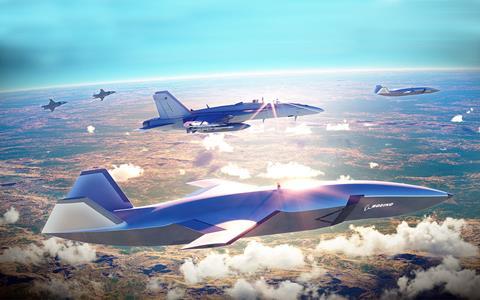
“It’s all about interoperability and interchangeability. We are developing MQ-28 to be well aligned with US government architectures of the future, so that we are compatible, and an [MQ-28] can turn up at any place in the sky and jump on board with western aircraft.”
Boeing has given the MQ-28’s range as 2,000nm (3,700km). Australia’s vast geography and the sheer size of the Asia-Pacific make long-range an essential attribute for a CCA operating with the RAAF or other air forces in the region. Another emphasis is collaboration between the MQ-28 and Australia’s two fighter types, the Boeing F/A-18F Super Hornet and Lockheed Martin F-35A.
Although an MQ-28 was sent to the USA in 2023, ostensibly for work related the USAF’s CCA programme, in July 2024 a USAF downselect effectively focused the USAF’s increment one CCA efforts with two California companies: Anduril and General Atomics Aeronautical Systems.
This will see the companies receive funding to design, manufacture and test “production-representative test articles”, according to the USAF. This includes flight testing the prototype aircraft.
Boeing, for its part, says that the MQ-28 was not part of its offering for increment one, nor was a variant of the MQ-25 Stingray, which is being developed as an air-to-air refueller for the USN.
“We did not propose the MQ-28 or an MQ-25 derivative for increment one of this programme,” says Boeing. “We proposed another proprietary solution tailored to the US Air Force’s unique CCA phase one requirements.”
Alongside the USAF CCA effort, MQ-28 work in Australia has continued. The fleet comprises eight Block 1 MQ-28s that Boeing views as developmental test assets. These will be retired as the MQ-28 Block 2 is produced. Unlike the Block 1 aircraft, the Block 2 is an operational test asset.
“All of the things that you need to be operational are embedded in the Block 2 design, and we’ll move across all the technology that we’ll have tested in the Block 1 airframe,” says Ferguson.
The first Block 2 example is already in production at Boeing’s Melbourne facility. Ground tests and a first flight will come later this year. Following an A$399 million ($248 million) Australian government contract in February 2024, Boeing is building three Block 2 aircraft.
The Block 2 will not have major airframe changes from the Block 1. Perhaps the main external change will be the removal of the Block 1’s dogtooth wing. Internally, the aircraft will see wiring modifications and other changes that will improve maintainability.
Block 2 will also get a new global positioning system (GPS)/inertial navigation system to replace the Block 1’s commercially available GPS – Ferguson quips that the Block 1’s GPS “wouldn’t last three seconds in a denied environment”.
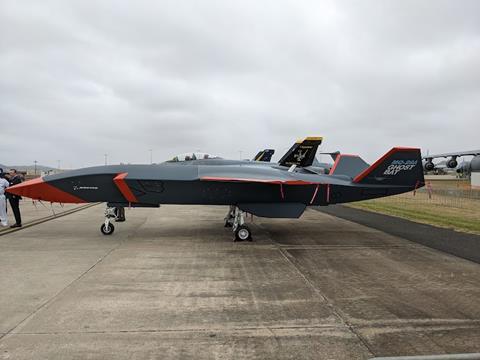
Flight is highly automated, with the “pilot” mainly serving as a supervisor during take-off and landing. Once the aircraft is airborne it is handed off to another platform, such as a Boeing E-7 Wedgetail airborne early warning and control aircraft.
Boeing has never disclosed the MQ-28’s engine, but there is speculation that it is powered by the Williams FJ44 or Pratt & Whitney PW300. Ferguson declines to comment on the MQ-28’s engine but says the powerplant will not change in the Block 2. The MQ-28 may be armed in the future, but for now the focus is EW and ISR applications.
By the end of September Boeing aims to conduct a demonstration of an operational CCA capability, which will see the MQ-28 teamed up with in-service RAAF types. Prior to mounting such a complicated undertaking, Boeing will conduct a series of associated demonstrations that address specific missions.
Ferguson also sees potential for interesting operational concepts between its CCA architecture and the E-7, another product from the Boeing portfolio. Early visions of CCAs tended to focus on supporting combat types such as the F-35A, but another concept could see a “stack of CCAs sitting somewhere” that an E-7 can allocate for specific missions.
Another element of the MQ-28 – and one that could swing the balance for RAAF sales – is its broad local supply chain. Boeing says that over 74 Australian companies contribute “critical and important products and services” to the programme in areas such as manufacturing, machining, electrical systems, landing gear, and others. In all, over 200 local suppliers have contributed to the MQ-28 programme, including 50 small and medium-sized enterprises.
Saab is one of the more recent companies to join the programme. Its involvement includes communications systems, avionics, as well as electromechanical actuators and controllers for the MQ-28’s primary flight control system.
“The Ghost Bat is an exciting programme for the Australian defence sector and demonstrates what can be achieved through collaboration between global defence organisations, local businesses, and the defence force,” says Saab Australia managing director Andy Keough.
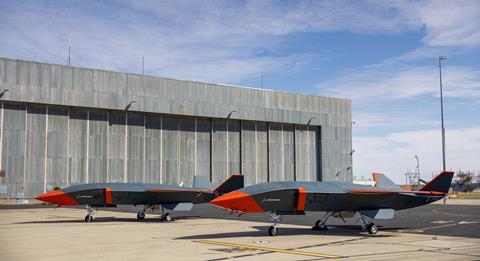
The big question facing the MQ-28 and other CCAs is, of course, orders.
In the absence of orders, Boeing is still moving forward with an investment in an MQ-28 production location in the Wellcamp Aerospace and Defence Precinct to the west of Brisbane.
Ferguson admits that there is somewhat of a “chicken and egg” paradox.
“If we don’t build it, we can’t contract with Defence, and if we don’t contract with Defence, we can’t build a building. So, we’re going out with Boeing funds to build the building, trusting in the heritage of the product and its future success.”
On the broader market opportunity, Ferguson believes that the MQ-28 will deliver an operational capability in the coming years, and that the jet’s cost will be competitive. Low cost is seen as an imperative for CCAs, which are envisaged as bringing “affordable mass” to air forces suffering from a dearth of manned combat platforms.
“Our business strategy here is to deliver it, make it work, make it cool, make it cheap, and they will come.”



